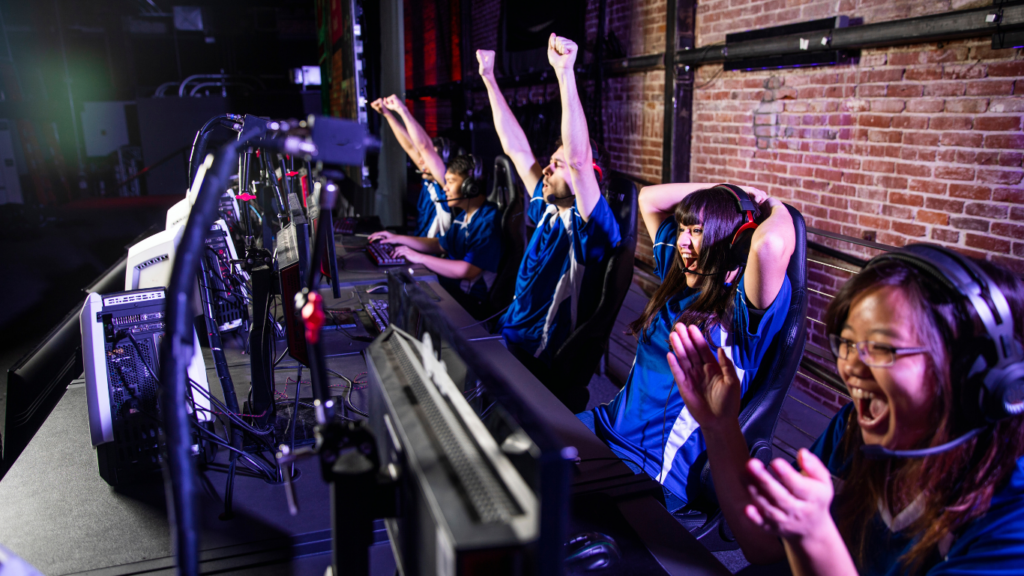The Origins of High-Stakes Tournaments
High-stakes tournaments have roots in the competitive spirit that dates back centuries. Their journey from ancient contests to modern global events marks significant evolution.
Early Beginnings and Historical Context
Early high-stakes competitions began as public spectacles in ancient cultures. Gladiatorial games in ancient Rome and jousting tournaments in medieval Europe serve as early examples where participants faced challenges for rewards and recognition. These events drew large crowds and fostered community rivalries. As society evolved, so did the structure and scale of these competitions, creating a foundation for today’s multifaceted tournaments.
Pioneering Events and Their Impact
Poker tournaments in the 1970s and 1980s pioneered the concept of structured high-stakes competitions with clear rules and substantial prizes. The World Series of Poker (WSOP), established in 1970, drastically elevated poker’s profile, attracting a diverse group of participants and increasing audience interest. These early events inspired other competitive formats and influenced the integration of technology and media, eventually shaping the dynamic, global tournaments seen today.
The Rise of Professional Tournaments
High-stakes tournaments have transformed significantly, integrating technology and culture over decades. Modern events now draw global audiences and boast impressive prize pools.
Evolution in the 20th Century
The 20th century marked a pivotal era for professional tournaments. Chess emerged as a prominent competitive sport with the inaugural World Chess Championship in 1886 paving the way. In the mid-1900s, tennis witnessed professional participation with the establishment of the Grand Slam tournaments—Wimbledon, the US Open, the French Open, and the Australian Open—garnering international attention. The 1970s saw the inception of the World Series of Poker, revolutionizing how card games were perceived and played. The integration of television coverage broadened visibility, and subsequently, participation surged.
Major Championships and Legacy
Major championships fuel the legacy of professional tournaments. Events like the FIFA World Cup, initiated in 1930, evolved into a global phenomenon celebrating soccer. Similarly, the Masters Tournament, founded in 1934, set benchmarks in golf. These tournaments drive not only competition but also cultural impact, uniting diverse backgrounds. The legacy of these events lives in the traditions they uphold and the careers they launch. Notably, they create a framework for newer tournaments to follow, influencing organizational structures and the scale of modern competition.
Technological Advancements and Their Influence
Technological advancements have radically transformed high-stakes tournaments, making them more accessible and engaging. The emergence of digital media and online platforms has played a pivotal role in this evolution.
Impact of Broadcasting and Media
Broadcasting and media have revolutionized the way tournaments reach audiences. Television networks first paved the way by bringing major events like the Olympics and the Super Bowl into living rooms worldwide. With the advent of the internet, live-streaming on platforms like Twitch and YouTube expanded reach further, allowing real-time engagement with audiences across continents. Social media channels amplify these events by offering:
- clips
- highlights
- player insights
enhancing the viewer experience and creating trends that drive audience interaction. This extensive coverage raises the profile of tournaments and attracts sponsors, which in turn boosts prize pools and the prestige of events.
Role of Online Platforms and Virtual Competitions

- Online platforms have shattered geographical barriers, enabling players from different locations to compete without the need for physical presence.
- This development has stimulated the growth of eSports and other digital competitions, which have evolved into a billion-dollar industry.
- Platforms like Steam and Epic Games host millions of players, offering tournaments with structure and rules that match traditional sports.
- Virtual competitions ensure convenience and inclusivity, providing a stage for emerging talent worldwide.
- Players now enjoy the ability to participate in events from their homes, adding flexibility to the competitive landscape and opening up opportunities for people who couldn’t engage in conventional tournaments.
Contemporary High-Stakes Tournaments
Contemporary high-stakes tournaments captivate global audiences and highlight the prowess of elite competitors. Influential figures and renowned events define the current landscape in this vibrant era.
Key Players and Influential Figures
Many high-stakes tournaments owe their prominence to key players and influential figures. In poker, players like Daniel Negreanu and Phil Ivey have pushed the game’s boundaries, inspiring both new and seasoned players. Similarly, in eSports, personalities such as Faker and Ninja have become synonymous with skill and showmanship, driving interest and changing perceptions about competitive gaming. Magnus Carlsen, reigning World Chess Champion, continues to hold onto the traditional game’s core while promoting innovation and modern strategies.
Notable Modern-Day Events
Several modern-day events stand out in the tournament scene. The International, Dota 2’s premier championship, consistently boasts prize pools exceeding $40 million. Fortnite World Cup attracted millions of viewers worldwide, combining traditional sports spectacle with interactive gaming elements. The World Series of Poker remains a staple in the poker calendar, maintaining its status as the foremost test of skill and endurance. Similarly, eSports competitions like League of Legends World Championship continue to draw vast viewership, fostering a global community of passionate fans. These events highlight the blend of tradition and technology that defines contemporary high-stakes tournaments.
The Future of High-Stakes Tournaments
The future of high-stakes tournaments looks promising and dynamic. Rapid technological innovations and cultural shifts continue to shape the landscape.
Trends and Innovations
High-stakes tournaments increasingly prioritize virtual reality (VR) and augmented reality (AR). VR provides immersive experiences, while AR offers interactive elements. Blockchain technology introduces enhanced security and transparency, making it easier to track and reward participants. Artificial intelligence (AI) plays a pivotal role in analytics, offering real-time insights and personalized viewer experiences. Global audiences embrace gamification, transforming tournaments into interactive spectacles.
Challenges and Opportunities
Social responsibility remains crucial as tournaments grow. Fair play and inclusivity are essential, encouraging diverse participation. Regulatory frameworks evolve, addressing concerns and offering protections. Organizers must balance entertainment with responsible gaming, fostering a safe environment. Partnerships with technology firms offer opportunities for enhanced viewer engagement and increased monetization. Expanding audiences and technological advancement stimulate creative ways to reach and captivate participants worldwide.





